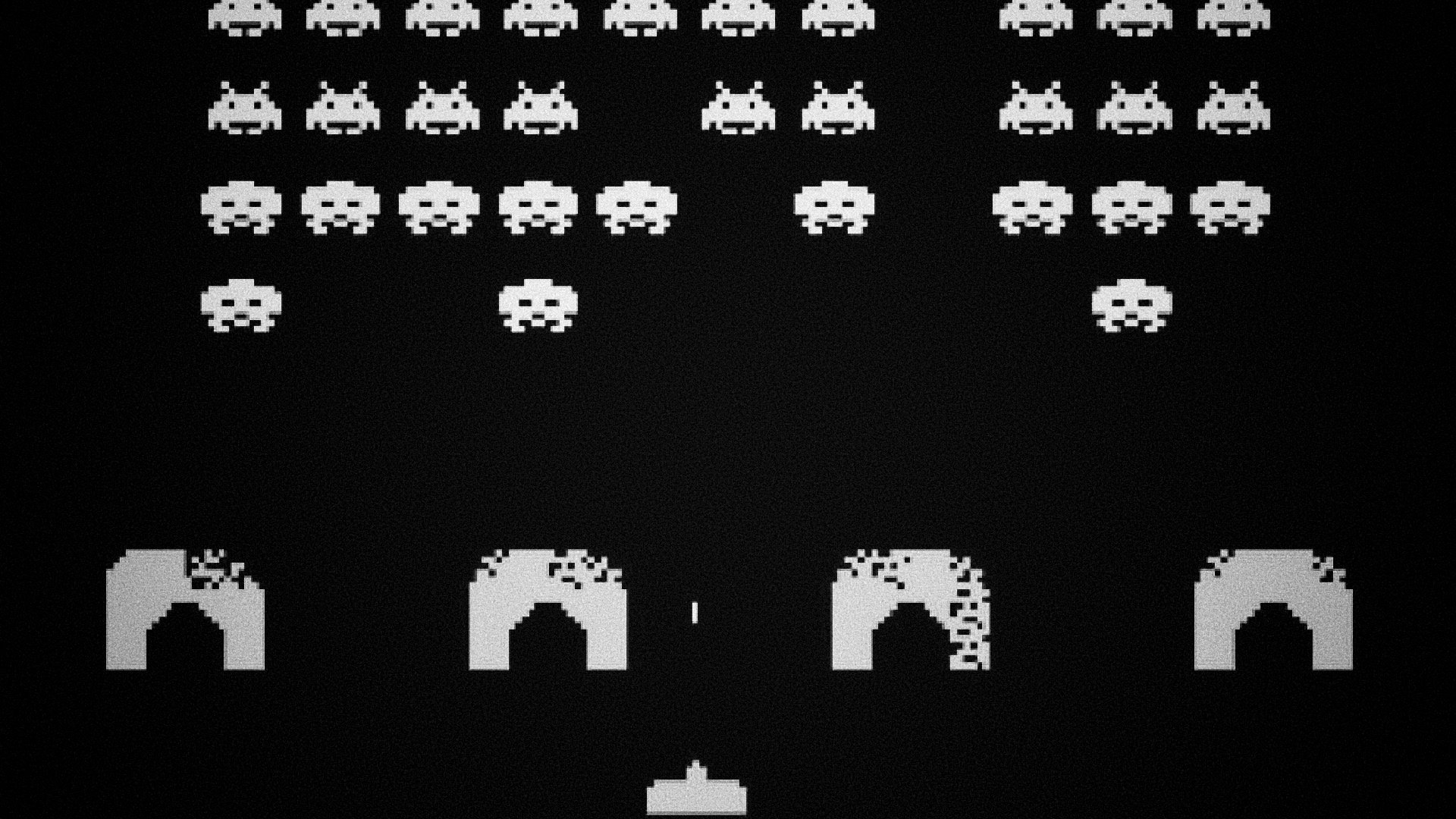
Q*Bert (1982)
Q-Bert (1982) is one of the most iconic arcade games of the early 1980s. Developed by Warren Davis and Jeff Lee for Gottlieb, it is a true masterpiece of the genre. There's no doubt about it: Q-Bert is a game that needs to be on your radar. Its quirky, colorful protagonist and addictive gameplay made it a staple of the golden age of arcade gaming. The game features simple yet challenging mechanics. Players control the character Q-Bert as he navigates an isometric pyramid, avoiding enemies and changing the color of the pyramid's cubes. Its unique visual design, clever gameplay, and memorable sound effects made it a standout title during its time and a lasting part of gaming history—no question.
Interview - What about books - Christian Heinke?
Christian Heinke, a crime fiction author, discusses his transition from traditional writing to embracing digital media and the internet. In 2005, he uploaded his first thriller "The Skin" as an audiobook podcast, leading to widespread downloads and a book contract. Dubbed "Author 2.0" for his innovative use of podcasts, Heinke continues to explore new media, offering his latest project "escape" as a free ePub with an integrated audiobook, while highlighting the internet's impact on author-reader interactions and sharing his experiences through his blog.
Zak McKracken and the Alien Mindbenders (1988)
Zak McKracken and the Alien Mindbenders, released by Lucasfilm Games in 1988, represents a unique blend of science fiction, comedy, and conspiracy theories wrapped in an adventure game format. Created by David Fox and Matthew Kane, the game follows tabloid reporter Zak McKracken as he uncovers an alien plot to reduce human intelligence using a stupidity-inducing machine hidden in telephone lines.
Time Pilot (1982)
When Yoshiki Okamoto secretly developed Time Pilot during his lunch breaks at Konami in 1982, he couldn't have known he was creating more than just another quarter-consuming arcade game. In crafting a title that would let players soar through different eras of aviation history, he was inadvertently documenting the video game industry's own pivotal moment of transformation – a time when simple games were evolving into complex systems of meaning and mechanical sophistication.
The Empire Strikes Back (1982)
When Star Wars: The Empire Strikes Back was released for the Atari 2600 in 1982, it marked not just the first officially licensed Star Wars video game, but the beginning of what would become one of entertainment's most influential gaming franchises. The game, developed by Parker Brothers and programmed by Rex Bradford, distilled one of cinema's most iconic sequences - the Battle of Hoth - into its most basic elements: a scrolling shooter where players pilot a Snowspeeder against an endless march of Imperial AT-AT walkers.
The Dig (1995)
In the autumn of 1995, LucasArts released what would become one of the most intriguing artifacts of gaming history: The Dig. Born from an unrealized Steven Spielberg story concept originally intended for his Amazing Stories television series, the game represents a fascinating intersection of Hollywood storytelling and interactive entertainment, while simultaneously marking the end of an era for the adventure game genre.
The Castles of Dr. Creep (1984)
The Castles of Dr. Creep represents a fascinating intersection of technological innovation, game design principles, and atmospheric storytelling within the constraints of 1984 computer gaming.
Super Star Wars (1992)
Super Star Wars, released in 1992 for the Super Nintendo Entertainment System (SNES), represents a significant milestone in both licensed game development and action-platformer design. Developed by LucasArts and Sculptured Software, the game adapts the original Star Wars film into a challenging action experience that leverages the SNES hardware capabilities while expanding upon the source material in creative ways.
Spider-Man (1982)
In the spring of 1982, as America's nascent video game industry reached its first commercial apex, Parker Brothers made an audacious bet: that a comic book superhero could successfully transition to the digital realm. Their adaptation of Marvel's Spider-Man for the Atari 2600 marked the first time a licensed superhero appeared in a home video game, creating a template that would influence decades of comic-to-game translations that followed.
Space Invaders (1980)
Space Invaders, released in 1978 by Taito and designed by Tomohiro Nishikado, stands as one of the most influential video games ever created. The game established several fundamental concepts that would shape the video game industry for decades to come.
Secret of Monkey Island (1990)
In the autumn of 1990, while the gaming industry was still dominated by fast-paced action titles and abstract puzzle games, Lucasfilm Games released a peculiar adventure that would forever change how we think about interactive storytelling. The Secret of Monkey Island, with its irreverent humor and innovative design philosophy, didn't just push the boundaries of what games could be – it redefined them entirely.
Pac-Man (1980)
Pac-Man stands as one of the most influential and recognizable video games ever created. Released by Namco in Japan in May 1980 and later by Midway in North America, the game established numerous conventions that would shape the gaming industry.
Little Computer People (1984)
In 1984, as personal computers were still finding their place in homes across America, a peculiar software title appeared that would quietly revolutionize how we think about artificial life and human-computer interaction. Little Computer People, released by Activision for the Commodore 64, wasn't quite a game in the traditional sense. It was something far more ambitious: an attempt to create artificial life within the confines of 8-bit technology.
Indiana Jones and the Last Crusade - The Graphic Adventure (1989)
At the twilight of the 1980s, as Hollywood's greatest archaeologist was cementing his place in cinema history, a different kind of Indiana Jones adventure was taking shape in the offices of Lucasfilm Games. Indiana Jones and the Last Crusade: The Graphic Adventure marked a pivotal moment not just for licensed games, but for the entire adventure game genre. This groundbreaking title would help redefine how interactive storytelling could work, while simultaneously proving that movie-based games didn't have to be mere cash grabs.
Indiana Jones and the Fate of Atlantis (1992)
In the spring of 1992, as Hollywood wrestled with the emerging threat of home video and cable television, a different kind of storytelling revolution was taking place in the modest offices of LucasArts in San Rafael, California. The result was Indiana Jones and the Fate of Atlantis, a video game that would not only redefine the adventure genre but challenge our fundamental assumptions about interactive narrative. Three decades later, its influence resonates through the corridors of modern game design, raising provocative questions about the intersection of cinema, mythology, and player agency.

















